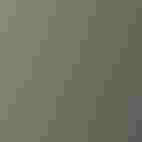American Crow
At a Glance
Crows are thought to be among our most intelligent birds, and the success of the American Crow in adapting to civilization would seem to confirm this. Despite past attempts to exterminate them, crows are more common than ever in farmlands, towns, and even cities, and their distinctive caw! is a familiar sound over much of the continent. Sociable, especially when not nesting, crows may gather in communal roosts on winter nights, sometimes with thousands or even tens of thousands roosting in one grove.
All bird guide text and rangemaps adapted from Lives of North American Birds by Kenn Kaufman© 1996, used by permission of Houghton Mifflin Harcourt Publishing Company. All rights reserved.
IUCN Status
Least Concern
Region
Alaska and The North, California, Eastern Canada, Florida, Great Lakes, Mid Atlantic, New England, Northwest, Plains, Rocky Mountains, Southeast, Southwest, Texas, Western Canada
Behavior
Direct Flight
Population
28.000.000
Range & Identification
Migration & Range Maps
Permanent resident in many areas; withdraws in fall from northern regions, and flocks spend the winter in some areas a short distance south of the breeding range.
Description
17-21" (43-53 cm). All black with strong bill, rather short square-tipped tail. Compare to other crows and ravens. Members of the blackbird family are all smaller, with different voices and shapes.
Size
About the size of a Crow
Color
Black
Wing Shape
Broad, Fingered, Rounded
Songs and Calls
Familiar caw-caw or caa-caa.
Call Pattern
Falling, Flat, Simple
Call Type
Rattle, Raucous
Habitat
Woodlands, farms, fields, river groves, shores, towns. Lives in a wide variety of semi-open habitats, from farming country and open fields to clearings in the woods. Often found on shores, especially in the Pacific Northwest, where the coastal population was formerly considered a separate species called “Northwestern Crow.” Avoids hot desert zones. Is adapting to towns and even cities, now often nesting in city parks.
Sign up for Audubon's newsletter to learn more about birds like the American Crow
Behavior
Eggs
4-6, sometimes 3-9. Dull blue-green to gray-green, blotched with brown and gray. Incubation is probably mostly or entirely by female, about 18 days.
Young
Fed by both parents and sometimes by "helpers." Young leave nest about 4-5 weeks after hatching.
Feeding Behavior
Opportunistic, quickly taking advantage of new food sources. Feeds mostly on the ground, sometimes in trees. Scavenges along roads and at dumps. Will carry hard-shelled mollusks high in air and drop them on rocks to break them open. Indigestible parts of food are coughed up later as pellets.
Diet
Omnivorous. Seems to feed on practically anything it can find, including insects, spiders, snails, earthworms, frogs, small snakes, shellfish, carrion, garbage, eggs and young of other birds, seeds, grain, berries, fruit.
Nesting
In courtship on ground or in tree, male faces female, fluffs up body feathers, partly spreads wings and tail, and bows repeatedly while giving a short rattling song. Mated pairs perch close together, touching bills and preening each other's feathers. Breeding pair may be assisted by "helpers," their offspring from previous seasons. Nest site is in tree or large shrub, 10-70' above the ground, usually in vertical fork or at base of branch against trunk. Rarely nests on ground or on building ledge. Nest (built by both sexes) is a large bulky basket of sticks, twigs, bark strips, weeds, and mud, lined with softer material such as grass, moss, plant fibers, feathers.
Conservation
Conservation Status
Attempts at extermination in past have included dynamiting of winter roosts. However, the crow remains abundant, and is increasingly adapting to life in towns and even cities.
Climate Threats Facing the American Crow
Choose a temperature scenario below to see which threats will affect this species as warming increases. The same climate change-driven threats that put birds at risk will affect other wildlife and people, too.






